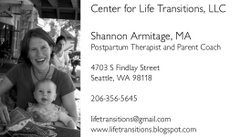I rarely watch talk shows, but sometimes there's a topic on that I simply can't resist. Today Oprah covered a subject I find endlessly fascinating: Obsessive-Compulsive Disorder (or OCD, for short). I was ready to learn about the new developments in OCD treatment, but the whole show left me totally repulsed. The show followed Dr. John Grayson as he "treated" several people affected by time- and life-consuming OCD. His belief is that through "exposure", people can be "cured" of OCD, much like radiation or chemotherapy can elimiate cancer. While I believe exposure can be helpful, I found Dr. Grayson's methods abhorrent. He asked a man who suffered from germ phobia to touch a toilet seat and then lick his hands. Then he asked several people to touch the inside of a Philly Dumpster and lick their hands. (Don't we all want to just lick our hands after touching the residue of cheesesteak and Yuengling vomit?)
Now, like I said, I believe practicing exposure can be helpful, but this was ridiculous and disgusting. Dr. Grayson insisted that the people affected by OCD were in control during their "exposure", but he neglected to consider the influence of being told by a doctor in front of the richest woman in the world's camera people to perform these gross practices. And secondly, these people wanted to be free from the many rituals they perform to keep themselves clean. No one said they wanted to be able to lick their hands after touching a toilet seat or a trash bin. His "exposures" seemed extremely far removed from their real-life experiences.
When I was young, I wanted desperately to be able to jump off the high diving board at the pool. I was also terrified to go up there. So, I would go as far as I could before the fear would force me to turn back. The first time up, I made it to the top of the stairs. The second time, I went as far as the end of the hand rails. Then a step past the hand rails. Then to the very end of the board. I thought about turning back, but I remembered my goal and all the scary things I did before (and survived) to get there, and I jumped. This "exposure" worked because I decided how far to go, and each subsequent "exposure" built on the one before it.
We can overcome our worst fears. And we can do it without inducing gag reflexes or panic attacks!
Subscribe to:
Post Comments (Atom)

6 comments:
Oh geez! That's awful! I can't see how that would help anyone. On top of being gross, it really could make them sick, and if it did, wouldn't it just reinforce the fear?
allie, I could not agree with you more! The goal is for the person to have control over life-altering fears. His methods just fuel the fear, without offering anything (other than a potential virus) to the person.
One and half years later, all of those who participated have maintained some gains. Obviously, they aren't done, since 2 days of treatment aren't enough; however, permanent gains for such a short time are important. Furthermore, although I would love to say the treatment is uniquely mine, if you check the literature on OCD or go to the International OC Foundation's website (www.ocfoundation.org), you will discover that this is actually the standard and accepted treatment by the vast majority of OCD experts.
-- Jonathan Grayson, Ph.D.
Thanks, Jonathan, for reading and posting a comment. I agree with you that exposure is an important part of combatting OCD's grip on one's life; however, I disagree with the gross-out exposure methods used on the "Oprah" show. In my experience, exposures are most effective when clients assert their right to take back control of their lives from OCD. When a clinician imposes an exposure on a client, it is the same brand of disempowerment that OCD uses to assert its control. I believe that client-led (not clinician-enforced) exposures lead to lasting gains against OCD's control.
Just thought I should mention that I have OCD, and have been working on battling it for quite a long time. Dr. Grayson's methods are one of the things that I've looked at in the course of that time. If you read his book on the subject, it actually mentions explicitly the concern you raise, namely that patients are in control of their exposure, and not forced by a clinician. The exposure's listed here are part of a chain which begins with one which elicits low anxiety, such as touching a tissue which has touched the outside of something "dirty", such as a dumpster. The treatment then progresses to more anxiety producing situations over time. It is actually quite similar to the method mentioned with the diving board.
I'm so glad to hear you say this, ccb138. The exposures shown on "Oprah" did not appear to be gradual or client-empowered at all. Of course, "Oprah" is after ratings and not necessarily a thorough depiction of best practices in treating OCD.
Post a Comment